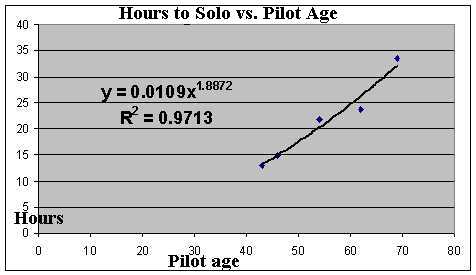Both of the above answers are IMO excellent and offer a historical perspective that encompasses the technology advances, regulatory increases and a/c systems complexities that the question ignores. And in that regard:
"Most every pilot who received their training from the 1930's through the 1980's, soloed in the single-digits to low-teens, and they got their ticket in jut over 40."
Most every? Do we have some hard numbers from a time recent enough to compare to today's complex airspace? (As mentioned, students who earned licenses in the 30's, 40's, etc. are apples when compared to today's oranges). I earned my PPL at the end of the 80's, in the same somewhat complicated airspace environment that Bryan teaches in, and what I was seeing at the flight schools then is what we are apparently seeing today. As AOPA's Flight Training Q&A states today:
"Theoretically, you can do it in 40 hours, but you would probably have to devote every bit of your time to training. Most people train a few hours a week and, therefore, log from 60 to 80 hours by the time they get a certificate."
(Good Q&A about learning to fly, BTW -
http://www.aopa.org/members/ftmag/artic ... ticle=2472 )
I had Florida's benign weather and a very responsive flight school with multiple training a/c to support my training, and I finished my PPL in just under 60 hours. Today's business travel, winter weather in seasonal climates and 'lonely only' LSA training a/c would all contribute to longer training periods.
PPL students also have the choice of doing Part 141 training, which lowers the 'minimum hours required' to 35...albeit with a more rigidly structured curriculum and most likely a qualifying simulator for the student. But even then, 40 hours is simply unlikely.
My impression is that most flight schools are especially sensitive these days about two things: the barrier that cost presents to aspiring students, and the poor completion rates of students entering training (which as I recall is <20%). I can't see either of these motivating a flight school to 'milk' a student; in most cases it ultimately doesn't work financially.
